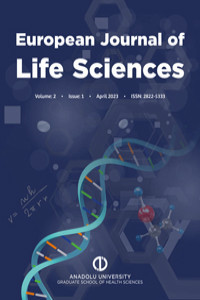Oral medicine administration errors in a patient with an enteral feeding tube
Oral medicine administration errors in a patient with an enteral feeding tube
Proper nutrition is vital for all patients with an expected lifespan. It is strongly recommended that patients whose oral intake is impaired or suspected to be impaired should be provided nutritional support. Concurrent medication administration during enteral nutrition may result in complications unless necessary precautions are taken. This study presents a case of a 94-year-old male patient with poor general health condition and being treated in a palliative care service. The patient was fed with an enteral feeding tube for seven drugs. There have been two tube occlusions causing the replacement of the tube since the enteral feeding tube was placed.The clinical pharmacist checked how the patient’s drugs were given through a nasogastric tube and how the patient’s relatives administered the drugs. Inappropriate dosage form selections and errors in administration through the nasogastric tube were identified. The interaction and incompatibility of the patient’s medications with the nutritional formula were also investigated. The clinical pharmacist informed the person giving the medicine to the patient about the correct administration of the medicine from the tube. The proper method for administering medications from the tube was ensured accordingly. Following the clinical pharmacist’s training, it was observed that the nasogastric tube was correctly used to administer the drug and the patient being monitored had no tube obstruction in the later phases of the treatment.It may be beneficial for a pharmacist to review drug dosage forms and applications in patients with a feeding tube in order to ensure correct administration and avoid undesired drug interactions.
___
- Druml C, Ballmer PE, Druml W, Oehmichen F, Shenkin A, Singer P, Weimann A, Bischoff SC. ESPEN guideline on ethical aspects of artificial nutrition and hydration. Clin Nutr. (2016); 35(3):545–556. https://doi.org/10.1016/j.clnu.2016.02.006
- Henry B. Evolving ethical and legal implications for feeding at the end of life. Ann Palliat Med. (2017); 6(1):87–90. https://doi.org/10.21037/apm.2017.01.01
- Cotogni P, Stragliotto S, Ossola M, Collo A, Riso S, On Behalf Of The Intersociety Italian Working Group For Nutritional Support In Cancer. The Role of Nutritional Support for Cancer Patients in Palliative Care. Nutrients (2021); 13(2):306. https://doi.org/10.3390/nu13020306
- Beckwith MC, Feddema SS, Barton RG, Graves C. A Guide to Drug Therapy in Patients with Enteral Feeding Tubes: Dosage Form Selection and Administration Methods. Hosp Pharm. (2004);39(3):225–37. https://doi.org/10.1177/001857870403900308
- Seo KS, Bajracharya R, Lee SH, Han HK. Pharmaceutical Application of Tablet Film Coating. Pharmaceutics (2020); 12(9):853. https://doi.org/10.3390/pharmaceutics12090853
- Türkiye İlaç ve Tıbbi Cihaz Kurumu. Brief Product Information and Operating Instructions. Retrieved May 14, 2023, from https://www.titck.gov.tr/kubkt
- IBM Micromedex with Watson. Database. Retrieved May 14, 2023, from https://www.ibm.com/products/micromedex-with-watson
- Wolters Kluwer. Lexicomp. Database. Retrieved May 14, 2023, from https://www.wolterskluwercdi.com/lexicomp-online/
- Phillips, M. S., White, R., Bradnam, V. (2007). Handbook of Drug Administration via Enteral Feeding Tubes. London, UK: Pharmaceutical Press. ISBN: 0-85369-648-9.
- Bendich, A. (Ed.). (n.d.). Handbook of Drug-Nutrient Interactions. Boullata, J. I., Armenti, V. T. (Eds.). Humana Press. Electronic ISSN: 2628-1961, Print ISSN: 2628-197X. Series Editor: Adrianne Bendich, Connie W. Bales. Retrieved from https://www.springer.com/series/7659
- Emami S, Hamishehkar H, Mahmoodpoor A, Mashayekhi S, Asgharian P. Errors of oral medication administration in a patient with enteral feeding tube. J Res Pharm Pract. (2012); 1(1), 37-40. https://doi.org/10.4103/2279-042X.99677
- Boullata JI, Carrera AL, Harvey L, et al. ASPEN Safe Practices for Enteral Nutrition Therapy. JPEN J Parenter Enteral Nutr. (2017); 41(1), 15-103. https://doi.org/10.1177/0148607116673053
- Cotogni P, Pedrazzoli P, De Waele E, Aprile G, Farina G, Stragliotto S, De Lorenzo F, Caccialanza R, for the AIOM-SINPE-FAVO-Fondazione AIOM Working Group. Nutritional Therapy in Cancer Patients Receiving Chemoradiotherapy: Should We Need Stronger Recommendations to Act for Improving Outcomes? J Cancer. (2019); 10(18), 4318-4325. https://doi.org/10.7150/jca.31611
- Magnuson BL, Clifford TM, Hoskins LA, Bernard AC. Enteral nutrition and drug administration, interactions, and complications. Nutr Clin Pract. (2005); 20(6): 618-624. https://doi.org/10.1177/0115426505020006618
- Schier JG, Howland MA, Hoffman RS, Nelson LS. Fatality from administration of labetalol and crushed extended-release nifedipine. Ann Pharmacother. (2003); 37(10): 1420-1423. https://doi.org/10.1345/aph.1D091
- Demirkan K, Bayraktar-Ekincioglu A, Gulhan-Halil M, Abbasoglu O. Assessment of drug administration via feeding tube and the knowledge of health-care professionals in a university hospital. Eur J Clin Nutr. (2017); 71(2): 164-168. https://doi.org/10.1038/ejcn.2016.147
- Jennane N, Madani N, OuldErrkhis R, Abidi K, Khoudri I, Belayachi J, Dendane T, Zeggwagh AA, Abouqal R. Incidence of medication errors in a Moroccan medical intensive care unit. Int Arch Med. (2011); 4: 32. https://doi.org/10.1186/1755-7682-4-32
- Van den Bemt PMLA, Cusell MBI, Overbeeke PW, Trommelen M, van Dooren D, Ophorst WR, Egberts ACG. Quality improvement of oral medication administration in patients with enteral feeding tubes. Qual Saf Health Care. (2006); 15(1): 44-47. https://doi.org/10.1136/qshc.2004.013524
- Bankhead R, Boullata J, Brantley S, Corkins M, Guenter P, Krenitsky J, Lyman B, Metheny NA, Mueller C, Robbins S, Wessel J; A.S.P.E.N. Board of Directors. Enteral nutrition practice recommendations. JPEN J Parenter Enteral Nutr. (2009); 33(2): 122-167. https://doi.org/10.1177/0148607108330314
- Başlangıç: 2022
- Yayıncı: Anadolu Üniversitesi
Sayıdaki Diğer Makaleler
A new HPLC method for selexipag analysis in pharmaceutical formulation and bulk form
Saniye ÖZCAN, Egemen Güvenç ÖĞÜT, Serkan LEVENT, Nafiz Öncü CAN
Oral medicine administration errors in a patient with an enteral feeding tube
Özgenur GERİDÖNMEZ, Kamer TECEN YÜCEL, Uygar OLGEN
Etiopathogenesis of depression and experimental depression models used in preclinical studies
Halide Edip TEMEL, Gülşen AKALIN ÇİFTÇİ, Leyla YURTTAŞ
Evaluation of in vitro hepatotoxicity of perampanel in comparison with carbamazepine: old versus new
Gülnar FARMANLI, Sinem ILGIN, Bülent ERGUN, Merve BAYSAL, Abdullah Burak KARADUMAN, Özlem ATLI EKLİOĞLU
